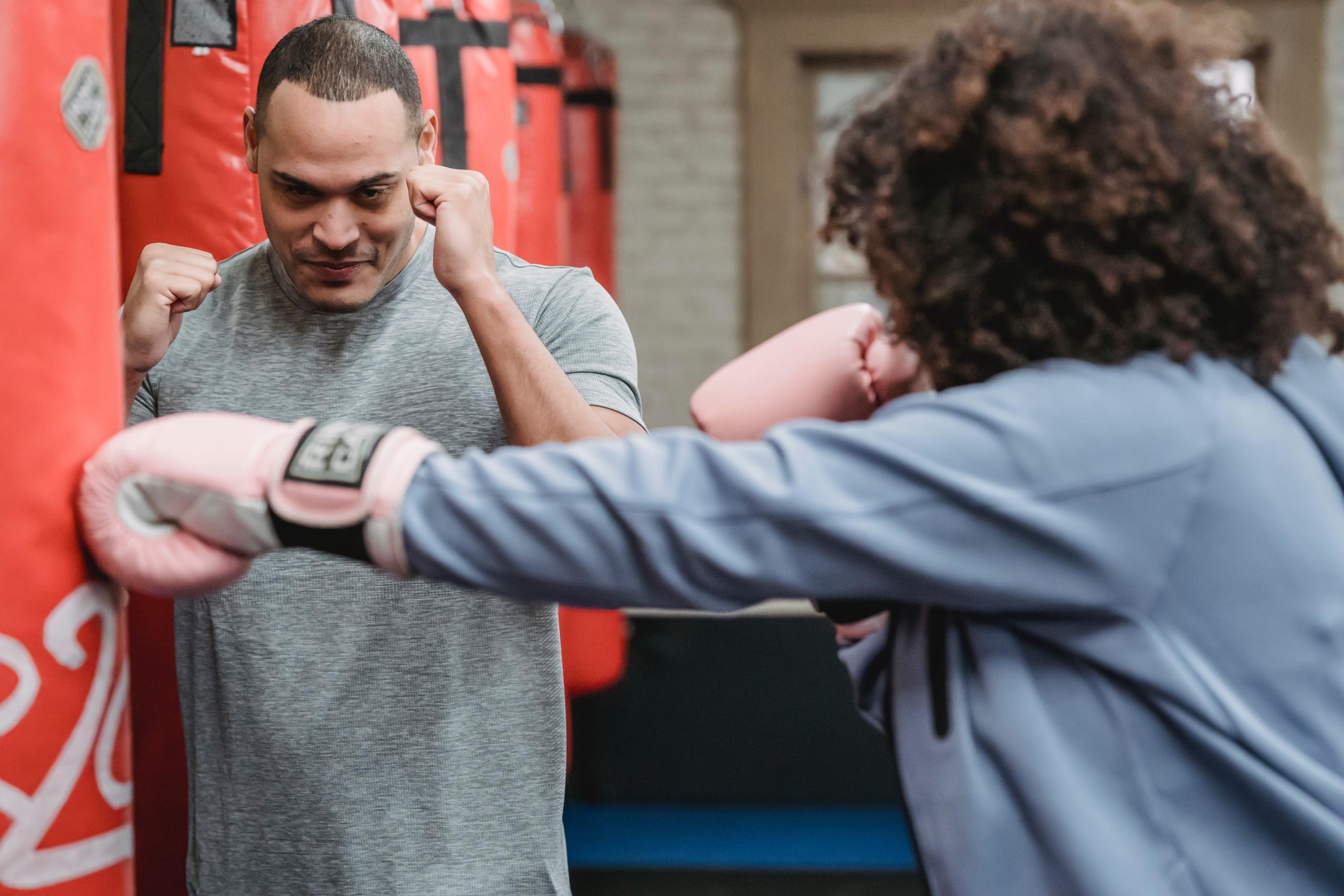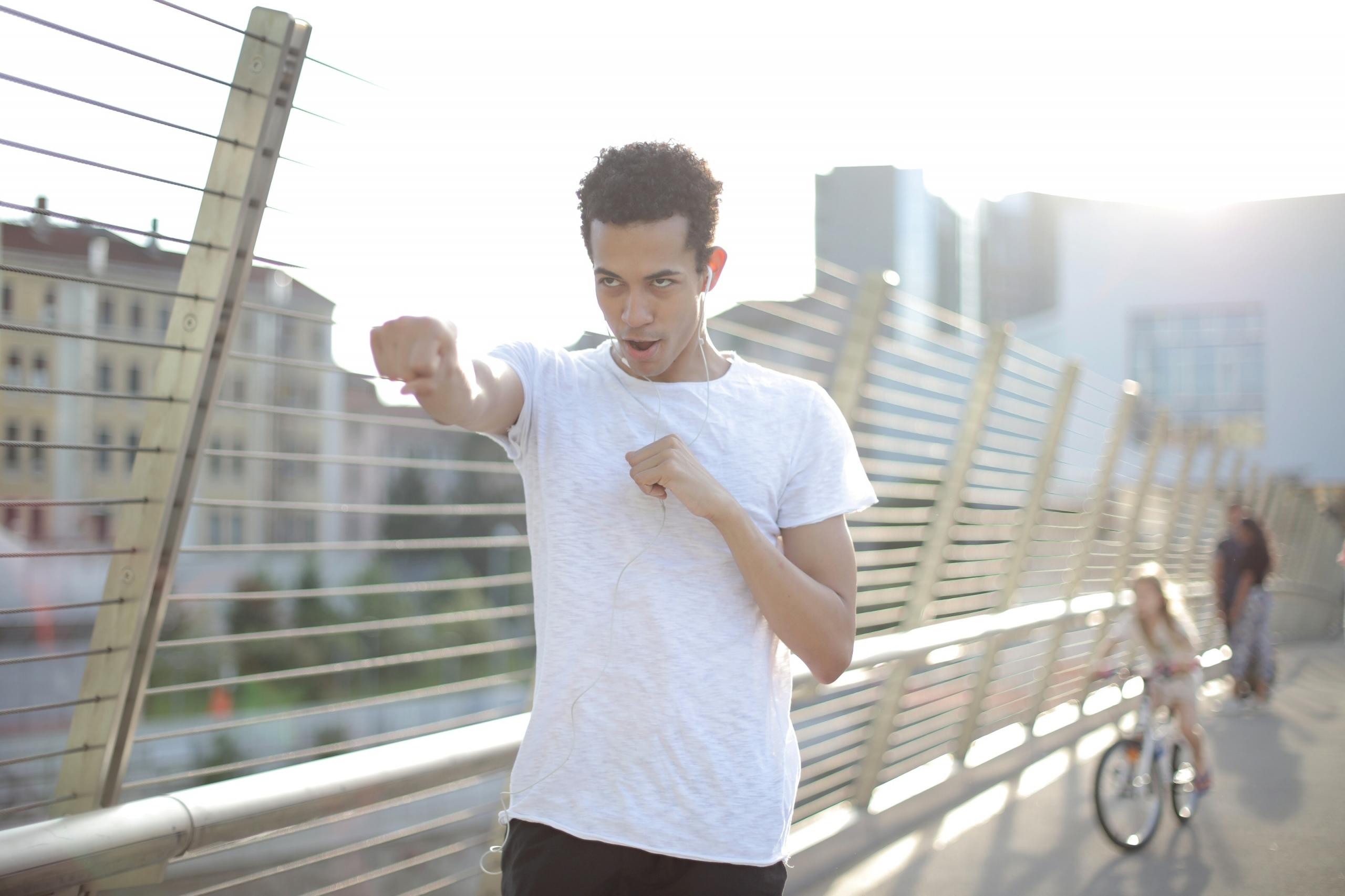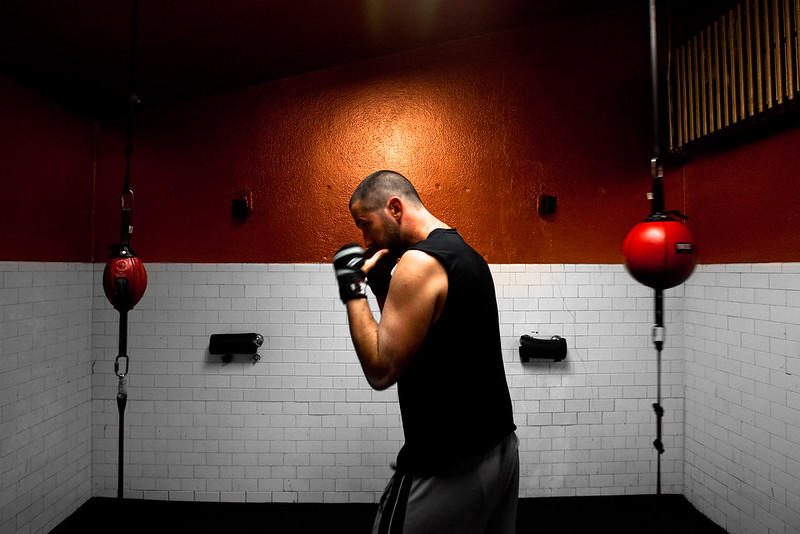Boxing shadow style is vital training for anyone who wants success in the ring. As a newbie to the sport you may be wondering, what is shadow boxing?
If that is you, keep reading to find out where to get a shadow boxing workout as well as everything you need to know about the benefits of shadow boxing.
Want to give private lessons?
Join the Superprof community and share your knowledge with inquiring and motivated students.
What is Shadow Boxing?
In simple terms, boxing shadow style is punching and moving with an unseen opponent and while there are many benefits of shadow boxing, the main one is so that you can practise your footwork.
Boxing shadow style is unstructured and unformed. It is unconcerned with pushback or resistance.
In short, a good shadow boxing workout will help you to build speed and endurance and condition your muscles. It’ll improve your rhythm, footwork, power, strength, and overall fighting performance.
When you consider that you are simply fighting air, the benefits of shadow boxing are extremely numerous.
Simple, yet versatile, shadow boxing will help you to focus on how your body feels as it moves without needing to consider the pressure of an opponent or bag coming back at you.
In fact, one of the benefits of shadow boxing is that you will not need a bag, gloves or anything else to get a good shadow boxing workout under your belt.
Of course, you will need those things, which we will cover later. The only downside is that there is no contender, referee or clock to contend with, and therefore, no target to react or adjust to.
So, what is shadow boxing if the moves hardly resemble those you would use in the ring?
The Benefits of Shadow Boxing

For some boxers, working with bags, sparring and hitting a speed ball are enough to stay in fighting form. While these and training with a rope, weights and running are important to a boxer’s fitness routine, leaving out a shadow boxing workout is a huge mistake.
Bear in mind that every time you practise a physical task, your brain builds neural pathways that become a map to execute the task better and better. When you practise the same moves enough times, your brain develops what is called muscle memory.
When you build muscle memory, your brain helps your body to execute the same moves faster, and more efficiently. This is because the pathways and signals needed to execute it are firmly in place.
One of the many benefits of shadow boxing is that it builds muscle memory quickly because you are moving freely with no distractions.
Boxing shadow style means no rebound and no resistance. Many fighters mistakenly think that working with a heavy bag is the ultimate training exercise. Of course it is a good exercise that will teach you how to hit hard, soft and from many angles.
You could ask a training partner to hold the bag still for you, or you could let it swing freely thereby practising how to hit a moving target. All of that is good, but there is a flaw to this logic.
Firstly, the bag, which is a resistance training tool, will limit your range of movement. Remember, you will only be able to throw your punch as far as the bag. Once you connect with the bag, especially if you have someone holding it, your arm will stop. One of the benefits of shadow boxing is that it offers no resistance and means you can reach as far as you can.
Secondly, when your arm bounces back upon impact, your recovery muscles, those ones that pull your arm back after a punch don’t benefit from the development and the muscle memory building that they need. While bag exercises are necessary for building power, strength, precision and timing, a shadow boxing workout will help you build hand speed and train muscles that the bag won’t.
Shadow Boxing Strategies
The best way to make the most of shadow boxing is to have a real-life goal for why you are doing it. Instead of suddenly breaking out with air punches and fancy footwork, the best fighters use their shadow boxing sparingly. You might shadow box to:
- Warm up before a workout and cool down after
- Build a sense of rhythm like step then punch, step then punch and so on.
- Boost your coordination: changing your stance to deliver a different punch like using your non-dominant hand and so on.
- Develop fighting strategies.
Continuously working on your fighting technique means that you will be a diverse and unpredictable fighter.
Instinct, as well as muscle memory, are invaluable assets that every fighter should cultivate. Instinct is what tells you when to duck when a fist is flying at you, or when to walk around with your arms at your side, instead of curled up and protecting your face.
Building up these instincts and muscle memories are key to building your fight strategy. The best way to develop this is through shadow boxing.
For example, you might practise weaving and dodging so that when you are in the ring, your muscle memory will take over before your instinct does to duck a blow. If you have not discussed that in your private boxing lessons, you might consider a Superprof boxing coach to help you find a way to separate your natural instincts from those that you need to hone as a fighter.

Shadow Boxing Techniques
To the observer, it would be very easy to say: what is shadow boxing, however, there are very precise techniques behind every move.
Well, there can be.
The beauty about shadow boxing is that while you don’t necessarily need to work on fighting technique while you do it, you can. It’s a great way to try out new combinations, improve footwork and practise defensive moves. The greatest thing about it is that it allows the athlete to free wheel.
It’s also convenient. Shadow boxing can be done anywhere and anytime. Good advice is to try for some time in front of a mirror or video yourself so that you can critique your stance, punches and general form.
Recording your sessions is especially useful if you want to keep track of your progress over time and see how you develop as a fighter. Actually, a video or mirror is only second best to shadow boxing with a partner or under the watchful eye of a trainer.
Remember that shadow boxing will build muscle memory that will help you in the ring. What you do not want are fluid, but incorrect movements that look great but could cost you a win. This is why feedback from a boxing trainer will go a long way to improvement and style.
Another important practice is dodging and weaving which can be done with a slip bag, which is a small bag that hangs from the ceiling. When it is set in motion, it is perfect to practise dodging and weaving.
Before using a slip bag, set its height so that its widest part is level with your nose. Besides needing to bob and weave to avoid it, it is also the perfect tool to master the right head movements. While you are doing this, don’t forget your footwork as this is a good time to practise your slides, sidesteps and pivots.
Similar to the slip bag, try to set up a horizontal slip rope at shoulder height. Here, instead of weaving around something that is coming at you, you will need to weave back and forth below the rope.
In summary, all this makes it clear that boxing training under the guidance of a qualified trainer using the proper equipment is extremely beneficial. Having said that, if that is not possible, you can find out how to learn to box from home.
Want to give private lessons?
Join the Superprof community and share your knowledge with inquiring and motivated students.





